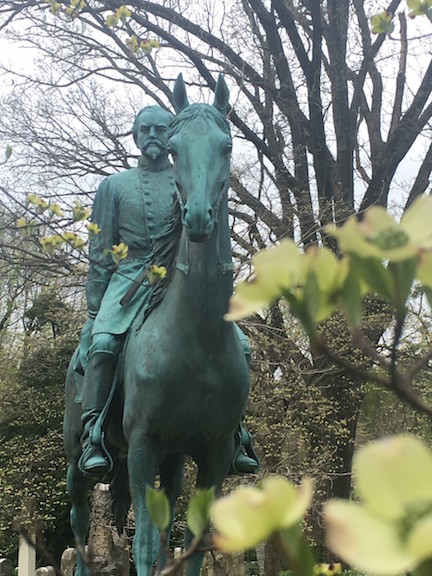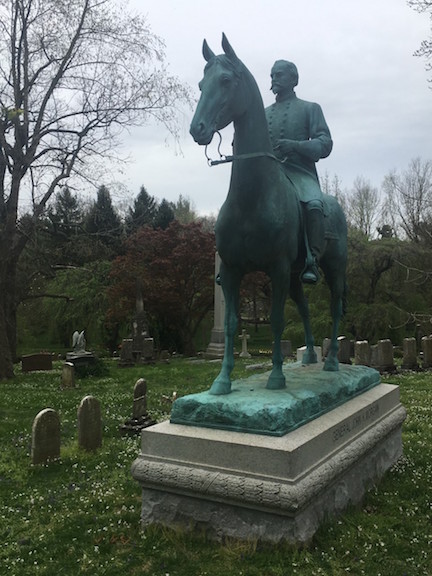Black Bess (Re-)Visited
 Last week, Steve Davis shared with us the story of “Black Bess,” John Hunt Morgan’s mare that was turned, by a sculptor’s whim, into a stallion. Because of Steve’s post, I decided to seek out the Morgan statue in Lexington, Kentucky, when I passed through recently.
Last week, Steve Davis shared with us the story of “Black Bess,” John Hunt Morgan’s mare that was turned, by a sculptor’s whim, into a stallion. Because of Steve’s post, I decided to seek out the Morgan statue in Lexington, Kentucky, when I passed through recently.
But the statue no longer stands in its former spot downtown. In October 2017, Morgan’s statue and a nearby statue of John Breckinridge, were both removed following a unanimous vote by the city council; in July 2018, the statues were moved to new locations in Lexington Cemetery, where both men are buried (read more here).
Morgan now stands among the cemetery’s section of Confederate dead. It was, I thought, a lovely spot. (The area around Morgan’s own gravesite was too congested for the statue to fit there, although there was room around Breckinridge’s family plot for his statue to be erected there.)

And, yes, the notorious anatomical anomaly Steve Davis had written about is still clearly visible:

Breckinridge’s statue was cast in civilian dress, stressing both his prewar political career and his postwar career as a lawyer. As Breckinridge himself about his war years, he was a “burnt out volcano.” In my home state of Connecticut he was just barely eclipsed by Stephen Douglas in the 1860 Presidential election. Following the war he spoke out against the Ku Klux Klan and in in favor of a state statute that required the courts to accept the testimony of a black citizen against a white one. During the war his emotional attachment to the Orphan Brigade of Kentucky Confederates, especially noted after their bloody assault at Stones’ River, is believed to have adversely affected his long term health. When the relocation of his statue was discussed, the proponents of the move stressed the segregated social milieu in which it was erected. The reality of the man himself, and his varied pre and post war contributions appeared to be deemed irrelevant. Ironically, a symbol of one ideology was removed by the acolytes of another.
Could not agree more with John Pryor. It was ridiculous to remove Breckinridge’s statue.
Shameful as the removal of the statues is, at least they are in a cemetery and not a warehouse.